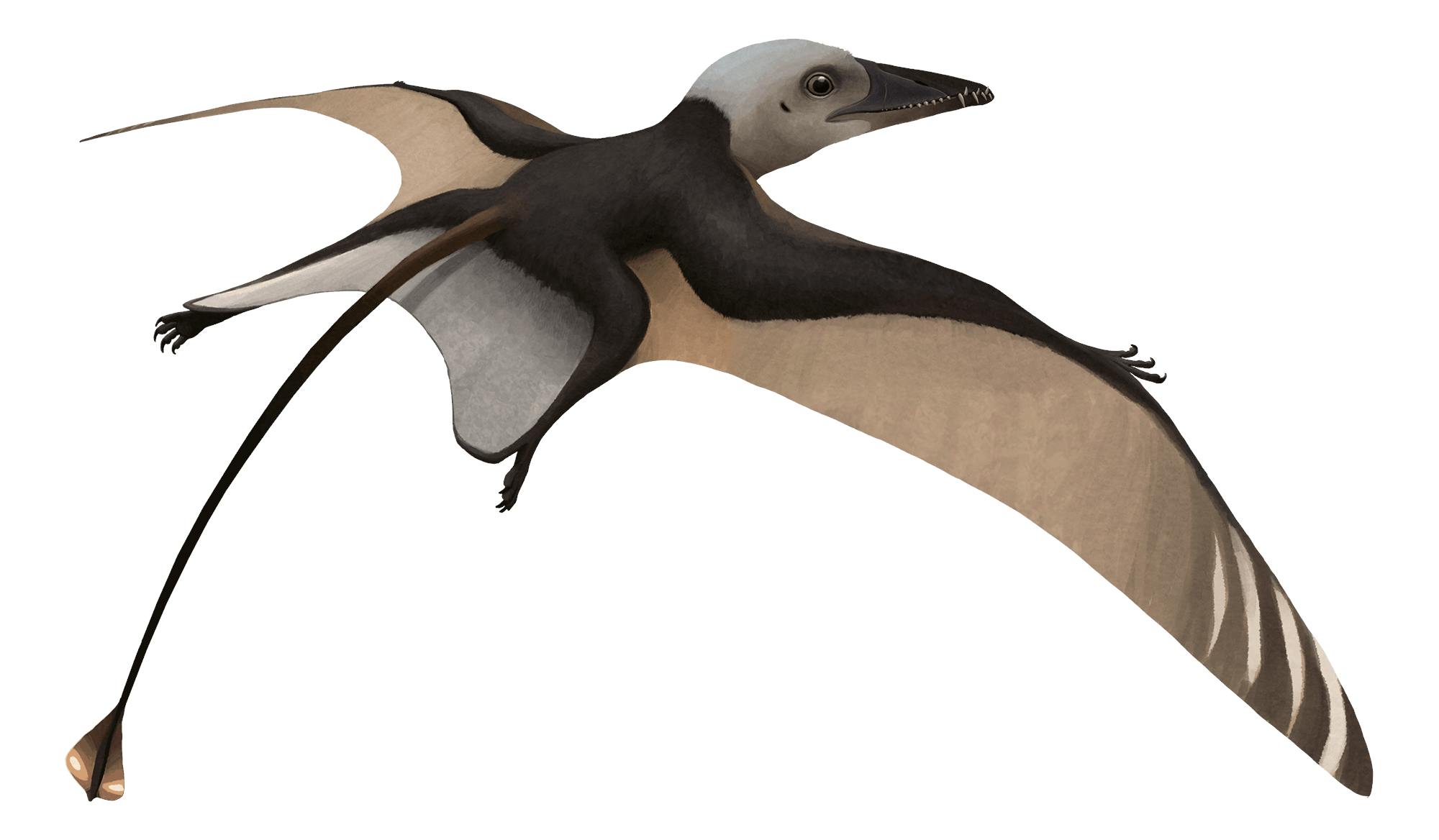


In 1978, paleontologist Rupert Wild illustrated and described the skeleton of a small eudimorphodontid pterosaur found in the Upper Triassic Calcari di Zorzino Formation near Bergamo, Italy. He considered this specimen to be a juvenile of the contemporaneous species Eudimorphodon ranzii, and was nicknamed the Milano Specimen by Wild. In 2009, the Milano Specimen was considered to be a second specimen of Carniadactylus rosenfeldi by Fabio Marco Dalla Vecchia, and noted similarities between it and the larger holotype specimen of C. rosenfeldi. Alexander Kellner noted several differences between the Milano Specimen and Carniadactylus as well as a similar degree of skeletal maturity despite their different sizes, and in 2015 he gave the Milano Specimen the name Bergamodactylus wildi.
The specimen is articulated and largely complete, but is missing most of the bone for both wing fingers, the hips, legs, and tail; however the size and shapes of most of the missing bones are preserved as impressions on the limestone slab. The animal came to rest on the seafloor while lying on its right side with wings folded and its hands just under its chin.
The skull is about 4.5 cm (1.75 inches) long and triangular in profile with a large round eye socket. Both the upper and lower jaws bear numerous multi-cusped superficially leaf-shaped teeth in the “cheek region.” There are four widely spaced pairs of conical teeth at the tips of the upper jaws, and two similar pairs in the lower jaw. The conical teeth pointed slightly forward n when the mouth was closed, the front teeth interlocked.
The neck is relatively short, roughly the same length as the skull, and despite most of the remainder of the bones of the vertebral column being missing, the fossil has impressions of a long tail. The wingspan was only about 47 cm (18 inches), about the same size as a magpie, making it one of the smallest known pterosaurs.
When Kellner erected Bergamodactylus, he noted several differences between the Milano Specimen and both Eudimorphodon ranzii and Carniadactylus rosenfeldi. Differentiating it from Carniadactylus he noted that the mandibular toothrow of Bergamodactylus extends farther back, and it has a shallower mandible. It also has a uniquely shaped pteroid bone in the wing. He also noted that the Milano specimen and the holotype of Carniadactylus are both nearly fully grown because of similar degrees of skeletal fusion, but Carniadactylus is 50% larger.
In 2018 Dalla Vecchia published a response to Kellner, disagreeing with his conclusions. He noted that Kellner incorrectly assumed a universal order of skeletal fusion among eudimorphodontids, when in fact different taxa appear to fuse bones in different orders. He also pointed out that the skull of the Milano Specimen is crushed and fractured so much, it’s impossible to differentiate unfused bone sutures from cracks. Additionally, he considered the other skeletal differences used by Kellner to be either mistaken interpretations, ontogenetic differences, or individual variation. He concluded that the Milano Specimen was a young individual of Carniadactylus, and sank Bergamodactylus.
When Bergamodactylus was alive, about 220 million years ago, southern Europe was close to the equator, and made up of a large number of medium-sized islands surrounded by shallow and warm seas. The complex multi-cusped teeth of Bergamodactylus and other eudimorphodontids are similar to those in many living insectivorous lizards, and they may have focused on insects and other small invertebrate prey.